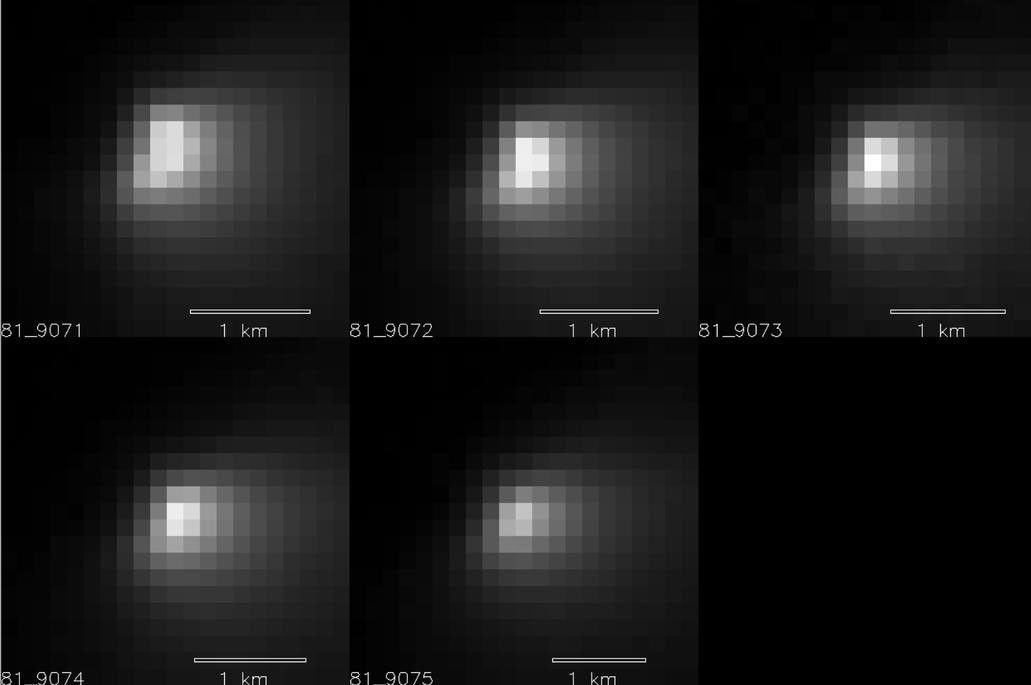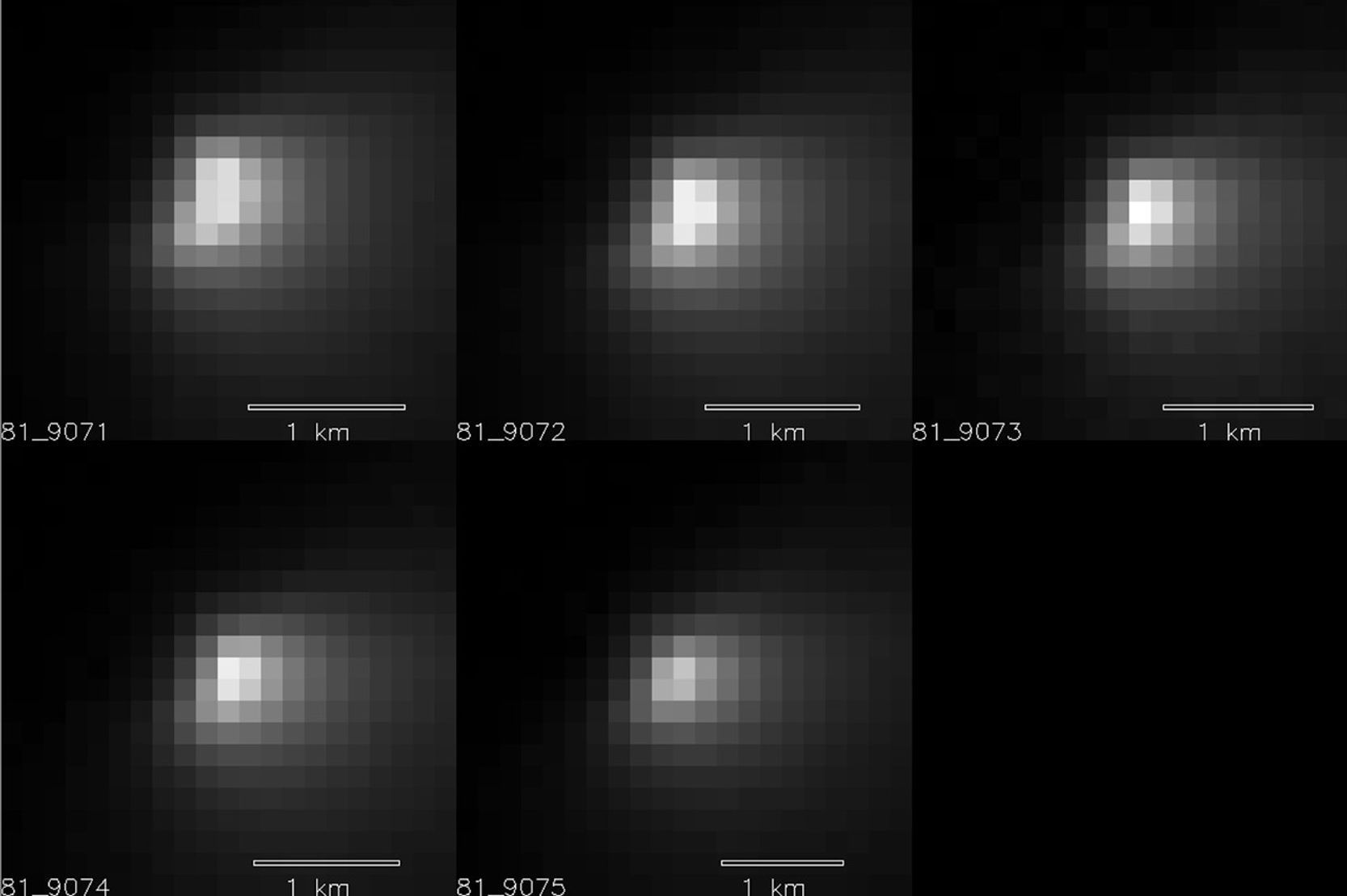Mars Orbiter Sizes Up Passing Comet
| Credit | NASA/JPL-Caltech/University of Arizona |
|---|---|
| Language |
|
Five images of comet C/2013 A1 Siding Spring taken within a 35-minute period as it passed near Mars on Oct. 19, 2014, provide information about the size of the comet's nucleus. These observations by the High Resolution Imaging Science Experiment (HiRISE) camera on NASA's Mars Reconnaissance Orbiter suggest that the nucleus is smaller than 1.2 miles (2 kilometers) across.
HiRISE acquired these images from distances ranging from 86,000 to 93,000 miles (138,000 to 150,000 kilometers) away from the nucleus, as comet Siding Spring made its closest approach to Mars. At those distances, each pixel covers an area from about 450 to 580 feet (138 to 177 meters). The scale bar on each image is 0.62 mile (1 kilometer).
The HiRISE observations of comet Siding Spring during this period were made possible due to very precise pointing and slewing of the Mars Reconnaissance Orbiter by engineers at Lockheed Martin in Denver, based on comet position calculations by engineers at NASA's Jet Propulsion Laboratory, Pasadena, California. HiRISE acquired three images 12 days before closest approach, when the comet was barely detectable above the "noise level" of the images. These early images indicated the comet was not quite at its predicted location. This new viewing angle on the comet was used to update its predicted location and timing at closest approach. Without this update, the comet may have been outside the HiRISE image area in the best images.
For more information on these and other HiRISE images, see http://hirise.lpl.arizona.edu.
HiRISE is one of six instruments on NASA's Mars Reconnaissance Orbiter. The University of Arizona, Tucson, operates HiRISE, which was built by Ball Aerospace & Technologies Corp., Boulder, Colorado. JPL, a division of the California Institute of Technology in Pasadena, manages the Mars Reconnaissance Orbiter Project for NASA's Science Mission Directorate, Washington.

























